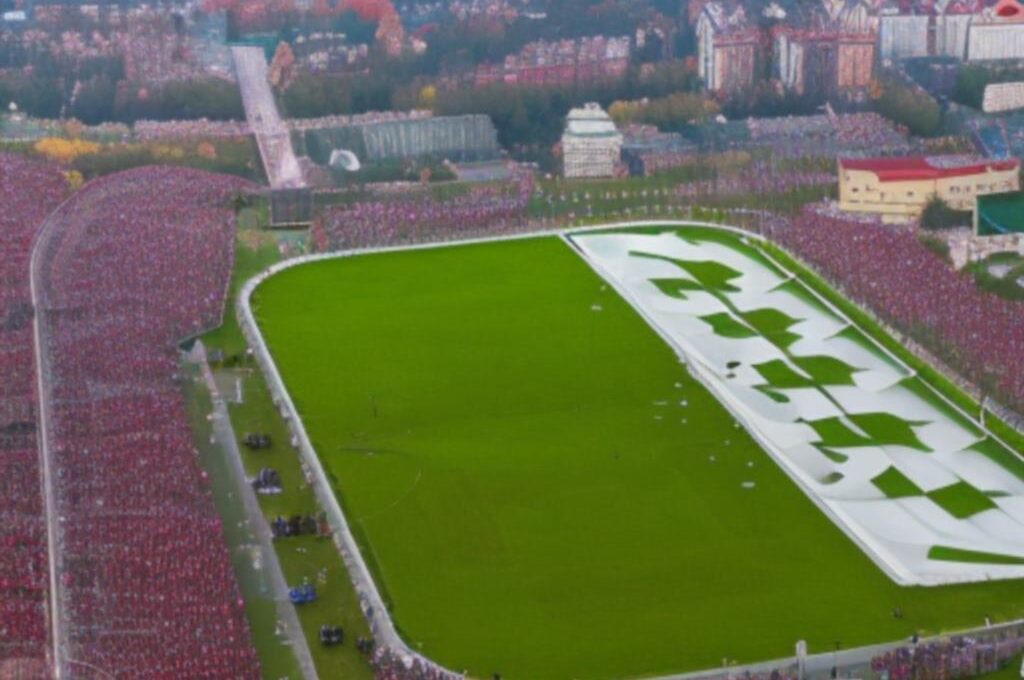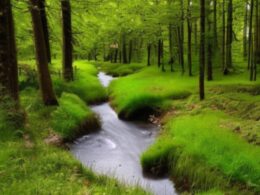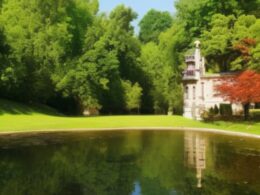Wigierski Park Narodowy to jeden z największych parków narodowych w Polsce. Zlokalizowany jest w województwie podlaskim, na terenie powiatów suwalskiego i augustowskiego. Jest to piękne i wyjątkowe miejsce, które warto odwiedzić. W tym artykule przedstawimy kilka ciekawostek na temat Wigierskiego Parku Narodowego.
Pochodzenie nazwy parku
Nazwa parku pochodzi od jeziora Wigry, którego obszar jest częścią parku. Jezioro Wigry ma powierzchnię 21,04 km² i jest największym jeziorem w Wigierskim Parku Narodowym. Nazwa Wigry pochodzi od staropolskiego słowa “wiga” oznaczającego wyłom lub zagłębienie w ziemi, co może odnosić się do ukształtowania terenu nad jeziorem.
Historia parku
Wigierski Park Narodowy został utworzony w 1989 roku. Jego powierzchnia wynosi 15 085,08 ha, z czego 11 575,16 ha stanowią lasy. Park został utworzony w celu ochrony wyjątkowego krajobrazu, różnorodności biologicznej oraz zabytków kultury materialnej i niematerialnej. Na terenie parku znajduje się wiele zabytków kultury, takich jak kościoły, cmentarze, chaty rybackie oraz kapliczki.
Flora i fauna parku
Wigierski Park Narodowy jest domem dla wielu gatunków roślin i zwierząt. W parku można spotkać około 1 000 gatunków roślin naczyniowych, w tym takie rzadkie jak storczyk różnolistny czy parzydło leśne. Park jest również siedliskiem wielu gatunków zwierząt, w tym wilków, rysi, łosi, żubrów, bobrów, borsuków, saren i dzików.
Atrakcje turystyczne
Wigierski Park Narodowy oferuje wiele atrakcji turystycznych. Największą z nich jest oczywiście Jezioro Wigry, na którym można popływać łodzią lub kajakiem. W parku znajdują się również liczne szlaki turystyczne, w tym popularny Szlak Wokół Jeziora Wigry. Można również odwiedzić wiele ciekawych miejsc, takich jak Klasztor Kamedułów w Wigrach, Muzeum Kultury Kurpiowskiej w Nowogrodzie czy Muzeum Przyrodnicze w Starych Lipskach.
Ochrona przyrody
Wigry National Park is home to over 100 species of birds, making it a haven for bird watchers.
One of the most interesting things about Wigry National Park is its unique landscape. The park is situated in the Suwałki Lakeland, a region that was formed by glaciers during the last ice age. The result is a stunning landscape of rolling hills, lakes, and forests that is home to a diverse array of flora and fauna.
The park is also home to the Wigry Lake, which is one of the largest and deepest lakes in Poland. The lake is a popular destination for water sports enthusiasts and fishermen, with a variety of fish species including pike, perch, and eel.
Another fascinating aspect of Wigry National Park is its cultural heritage. The park is home to several historic sites, including the Camaldolese Monastery, which was founded in the 17th century. The monastery is an important center of spirituality and is known for its stunning architecture and beautiful natural surroundings.
FAQs
What is the best time to visit Wigry National Park?
The best time to visit Wigry National Park is during the summer months, from June to August. This is when the weather is warmest, and the park’s flora and fauna are at their most vibrant.
Can I fish in Wigry Lake?
Yes, fishing is allowed in Wigry Lake, but you need a valid fishing license to do so. Fishing licenses can be purchased at the park’s visitor center.
Are dogs allowed in Wigry National Park?
Yes, dogs are allowed in the park, but they must be kept on a leash at all times. It’s also important to clean up after your dog to help keep the park clean and protect the wildlife that lives there.
Zobacz także:
















